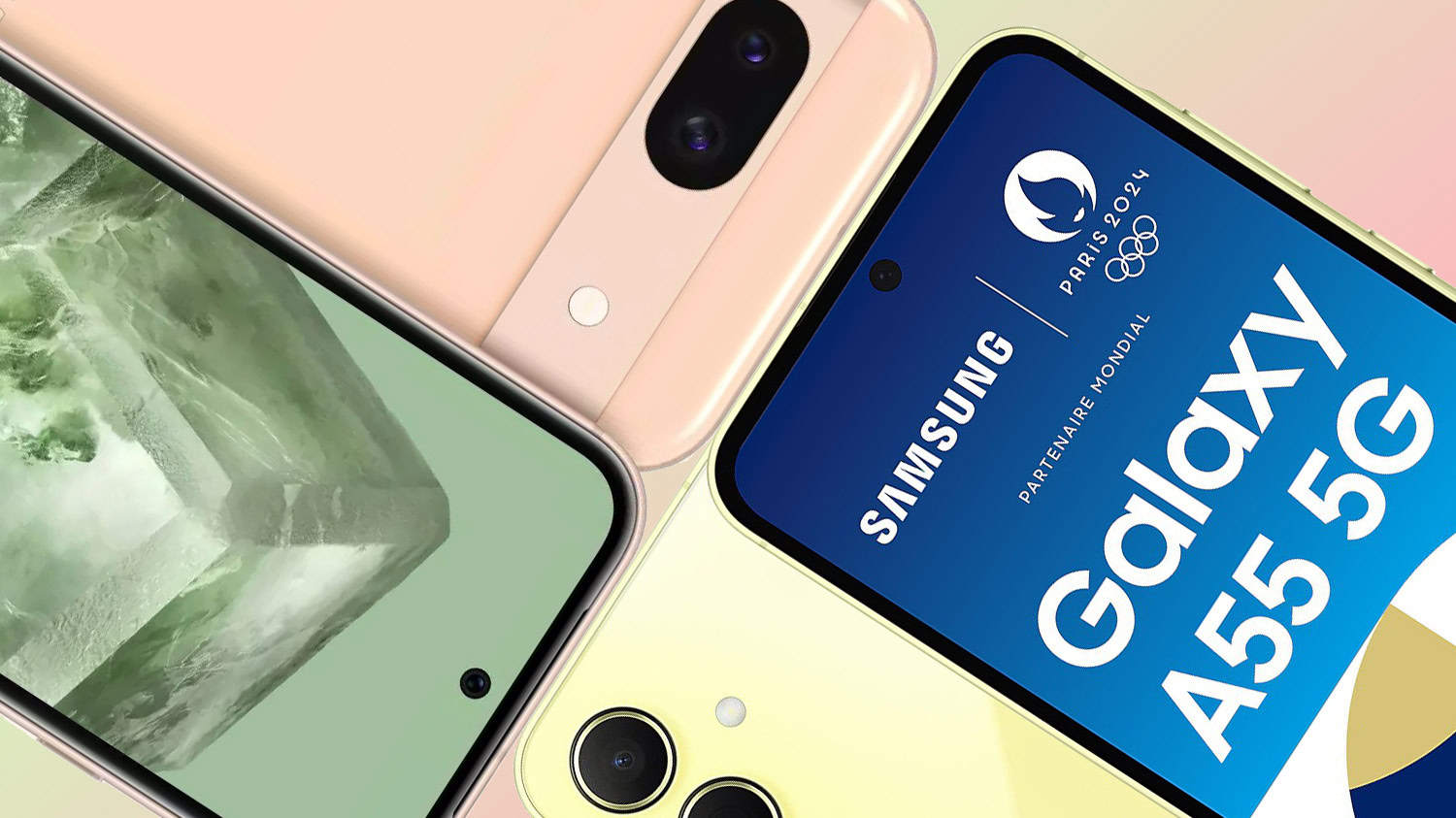Affiliate links on Android Authority may earn us a commission. Learn more.
No Galaxy A55 in the US is a win for the Pixel 8a, a loss for Android
March 20, 2024
Earlier this week, Samsung announced two new phones in its numbers-moving A series, the Galaxy A35 5G and A55 5G. In a surprise twist, though, the company confirmed that the US would get the cheaper A35, not the A55, unlike previous years where the higher-end A54 launched in the US but not the cheaper A34.
The reason seems straightforward on paper. The older but much more powerful Galaxy S23 and Galaxy S23 FE are often on sale in the US for a little more than $500 — the would-be price of the A55 — so why cannibalize those sales with a new option?
Keeping the Galaxy A55 away from the US market means fewer options for buyers in the mid-range Android market.
And on the face of it, I understand that too. If given the choice between a Galaxy A55 or a Galaxy S23 or S23 FE, I would pick one of the latter even if I had to pay $50 extra. But what if I was the kind of buyer who preferred the larger display of the A55, the microSD card slot, the larger battery, or — most importantly — the extra year of updates?Or what if I wanted to splurge on the 12GB RAM variant? The Galaxy S23 and S23 FE don’t offer those, while the Galaxy A35 could be too underpowered for my needs. So I’m out of options, and I’m looking elsewhere.
Samsung’s decision is a bit surprising in light of the company’s previous strategy: flood the market with Galaxy phones at every price point and let the best one win. Removing the Galaxy A55 from the equation leaves a gap in the $500 US smartphone market that the OnePlus 12R, Moto Edge (2023), and Google Pixel 7a would be all too happy to fill. Better yet, it leaves a nice lofty spot for Google’s upcoming mid-ranger too.

The Pixel 8a should be announced in a couple of months if past schedules are any indication of Google’s future plans. And its leaked specs seem enticing on paper: an improved 120Hz display, DisplayPort output for Android’s upcoming Dex-like functionality, and the Tensor G3 chip.
The A series is already a great seller for Google, we know that. It’s helping the company slowly gnaw at the smartphone market share in various countries and reach fourth place in the US. A better phone in the same price range with one less competitor on the market? Yeah, I expect the Pixel 8a will have an even better chance of gaining some extra market share this year too.
With one less competitor, the Pixel 8a should be raking in bigger numbers for Google, but at what cost?
Google should be jubilating about Samsung’s strategy volte-face. Or should it?
Look, if I put myself in Google’s shoes, I’m looking at the bigger picture, and that one isn’t so bright. Sure, I’d love to see Pixels making more of a dent in the smartphone world, and I think a lot of people would enjoy their exclusive features and awesome cameras. Specifically on home turf, in the US, the toughest market to crack.
But I also think the US market is already becoming an uphill battle for Android as a whole, so Samsung taking one option off the Android shelf isn’t helping anyone but Apple. Especially when it’s replacing it with a cheaper and less powerful option — the Galaxy A35 5G — which feeds straight into the US-centric narrative of Android phones being cheap and less powerful.
This feels like an admission from Samsung that even at an appealing price of $500 — and much less with carrier deals — it can’t compete with the cheaper or second-hand iPhones that occupy that segment. Samsung is just telling you to go for the cheaper A35, buy a year-old S23, or splurge on the money-maker premium S24 series. Upper midrange? Nah. And that is a loss for Android as a whole.

Incredibly fast 80W wired charging
Superb value

Excellent battery life
Improved IP rating

Solid performance and plenty of RAM
Improved 90Hz display